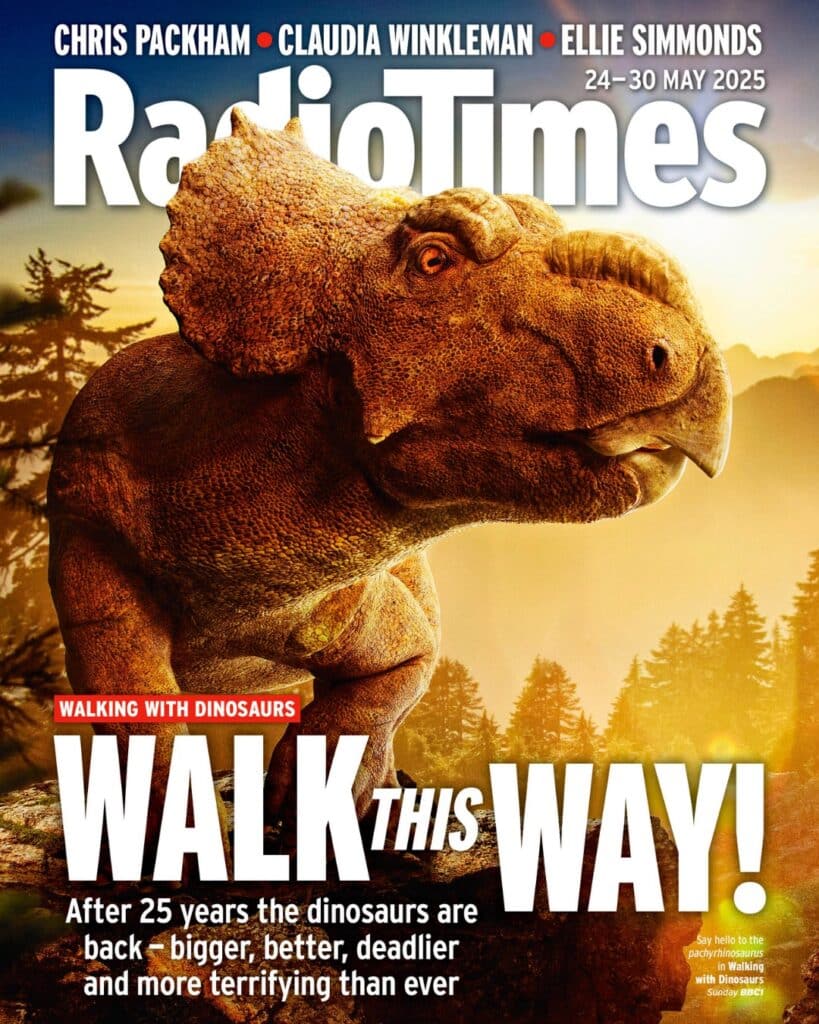
When Walking with Dinosaurs first stomped onto our television screens in 1999, it was nothing short of revolutionary. Blending state-of-the-art CGI with documentary-style filmmaking, it brought prehistoric creatures to life in a way that had never previously been seen on the small screen.
Fast forward to 2025, and the BBC has returned to this ancient world in Walking with Dinosaurs 2025. Like the original, this latest installment pushes technical boundaries. It combines state-of-the-art visual effects, cutting-edge science and breathtaking locations. The result is an epic series that follows the lives of six different dinosaurs.
Lewis Andrews was part of a large international team of filmmakers, VFX specialists and field crews whose work allowed audiences to experience dinosaurs as vividly as if they were watching them in real life.
Shooting Around The World
Working on the BBC’s Walking with Dinosaurs 2025 was an epic project for Lewis Andrews to be a part of, as it involved shooting in multiple locations around the world, including Canada, Portugal and the Canary Islands. TV work is very different from the feature film world, where you can sometimes feel like a small cog in a massive machine. This job, on the other hand, was an example of everyone mucking in to make the movie a reality. Comparatively, the sense of hierarchy was less of a thing. It was about getting the job done as one dependable team, something Andrews loves and thrives on. For him, the experience started to feel more like real filmmaking.
A Team Effort
Andrews worked with a number of crews around the world, from local fixers and aerial cinematographers to camera assistants, directors, DOPs and more. Every single person he worked with was an aspiring filmmaker in their own right, in pursuit of their dreams. It was a fascinating experience to work in the wild, particularly in Alberta, Canada, where they encountered grizzly and black bears and were armed with protective bear spray in case the bears decided to attack.
Capturing VFX Plates
Andrews considered himself very fortunate to be able to shoot VFX plates for the Walking With Dinosaurs documentary on his RED KOMODO camera. The VFX plates he shot were selected by director Owen Goer, who used them alongside the main material shot by award-winning DOP Paul Williams. He also had the pleasure of working with BAFTA nominated director of photography Neil Harvey and directors Tom Hewitson, Stephen Cooter on the 6 part series.
Andrews worked with issued copies of the storyboard with illustrations, along with a preview of some CG scenes provided in early development by the key VFX vendor, Lola Post Production. These materials were used to guide decisions about which VFX plates and elements would be required.
The BBC hired equipment from Wonderfilm Pictures, including Andrews’s RED KOMODO camera. VFX balls were also used on the show.
Managing VFX Data
In his role as Lead VFX Data Wrangler with Lola Post Production, Andrews was in charge of managing the VFX data for the show. It was imperative that match move artists had early access to photogrammetry shot on a drone and lens grids which they needed to begin tracking the footage.
Ensuring Dinosaur Scale and Realism
He captured lighting references using spherical HDRI photography so that the dinosaurs could be accurately lit in the 3D scene. Understanding the scale of the dinosaurs based on research was a key focus of the data acquisition on set. They had several tools, such as full-scale cutouts, that would serve as a reference for the DOP to set the frame and also for the 3D artists to apply a realistic scale to the CG creatures.
Post-Production
In addition to a bespoke FileMaker database that he created to capture shoot data on the fly for the show, Andrews developed a system to help organise and structure data in post-production. HDRs could be located by date and time of day—data that could be related to metadata from the main cameras. All of the VFX plates and elements he shot were compiled into a dailies report, complete with descriptions and usage so that the directors could access them during the editing process, which took place at Envy Post Production.
Post-data management work also included sending VFX reports from the on-set database, lens data, and creating a FileMaker database with a path for every photogrammetry file that would later be ingested into Milk VFX’s VFX pipeline. Andrews wanted to create a system that managed data effectively, allowing teams to access it easily. Due to the tight schedule, he also began stitching HDRIs in post, as VFX work had already started.
Creating Dynamic Environments
Multiple VFX tiles were shot and connected to make a large VFX background plate where the dinosaurs were animated into the scene. This process produced a similar result to what the VFX Array camera rig achieved with an all-in-one system. However, they were shooting it with an individual camera.
Shooting VFX elements that can be layered into compositions was another part of Andrews’s role. For example, on location, shooting movement variations with sand, ferns and tree branches being tugged or interacted with in front of a blue screen meant that footage could be comped into the scene. This was to make any of the dinosaurs’ physical interaction with the environment look more believable.
Equipment and Logistics
With the show being split into multiple crews shooting simultaneously around the world, each crew had a unique way of working and, of course, totally different camera equipment. Due to local restrictions on using motorized vehicles in some locations, all the equipment had to be carried on foot. The show was shot on cameras such as chicken cameras (DJI Ronin 4D), RED Raptor and Sony Venice, with multiple lenses for each. Every lens, camera and drone combination had to be gridded so accurate lens distortions could be mapped.
The UK release of Walking with Dinosaurs 2025 was in May, followed by the US release in June.